Visiting the Canadian Club Heritage Brand Centre

Note: The Canadian Club Brand Centre is now closed to the public.
When you step out of your car in Walkerville, Ontario – a former town that’s been encompassed by Windsor – you smell baking bread. Spicy, yeasty, rye notes with that sweetness of corn scenting the air. You are at the heart of Canadian rye whisky production. Visiting the Canadian Club Heritage Brand Centre is one of the key things to do in Windsor for whisky lovers.
I’ll be upfront with disclosure – at the time of writing this post, one of my clients is Canadian Club. However, everything that you read here is based on my own interest and enthusiasm about the subject. I’ve graduated my tastes from vodka to whisky over the past five years, and Canadian Club is one of my favourite smooth whiskies to drink. As well, history has always been a passion for me and the rich story of how Canadian whisky came to be known worldwide really starts with Hiram Walker and his distillery.
Now that we have that disclaimer out of the way, I can share with you some photos and tips from a summer trip we conducted for a group of lifestyle bloggers from the Greater Toronto Area and Vancouver. Here are a few of these awesome people:
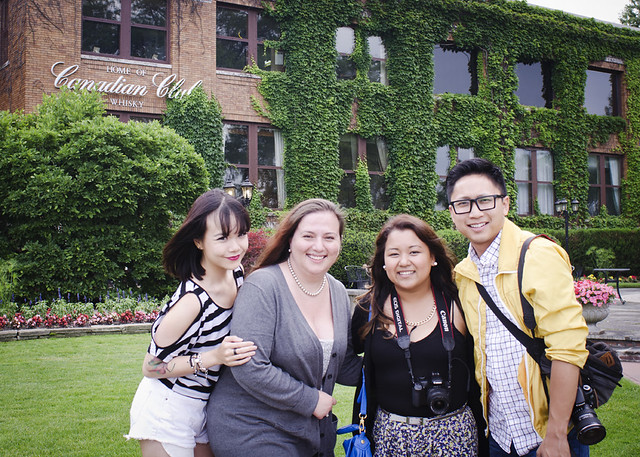
We were provided with an in-depth tour, hosted by brand ambassador Tish Harcus. Some aspects of the tour were specific to our tour group (we were VIPs!) but most elements are what anybody visiting the Center would experience.
A Bit Of History On Canadian Club Whisky
You may notice that it says Canadian Club 1858 on the Premium bottle. This was the year that Hiram Walker founded his distillery, first in Detroit before moving it across the river to a tract of land that eventually became Walkerville.
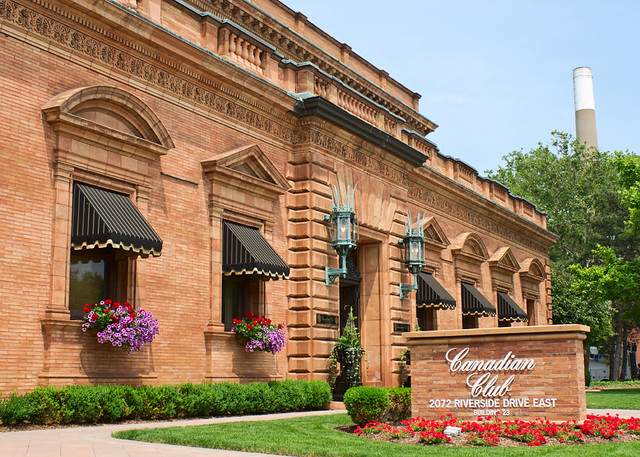
His product was the real deal – he was the first to label it “Canadian Club”, despite attempts by others to counterfeit it. It was the preferred whisky of Al Capone… although mentions of this are nowhere to be found in official records to keep the company squeaky clean in the eyes of the law.
The Canadian Club Heritage Brand Centre is the original office building that Hiram Walker built in 1894, in the style of an Italian villa. Office rooms and other key rooms in the building have been carefully restored and preserved to appear as close as to their original design as possible.
You can still smell the scent of cigar smoke from the days when it was an acceptable activity. Walker’s tasting room – a wood paneled small room where he used to taste product and innovations with his sons – has the most prevalent scent of cigar smoke. It’s literally, part of the woodwork. A portrait of the man himself, hanging on the fall wall, greets you as you enter.
A Building Full of Secrets
Tish, the brand ambassador for the Centre, has over the years uncovered many secrets to the building – from ledgers that show how quickly the Walker family’s profits rose as their whisky became widely popular in Canadian and US “gentleman club” bars, to the speakeasy in the basement where Al Capone and his fellow gangsters would meet for secret sessions to “speak softly” (to speak easy) during Prohibition times. A bit of help from the Smithsonian, which has much more information about the activities of that time, has helped Tish learn more about the building and its secrets.
Sometimes these gangster meetings became dangerous. With the help of the Smithsonian, Tish found an indent the size of a bullet – this is where an actual bullet hit as one gangster tried to off another one during a heated discussion. On the back wall you see openings where once existed tunnels for shipment of product under the Detroit River.
One room that still contains a mystery is the former swimming pool where employees used to enjoy a dip. Drained decades ago and covered with flooring, the swimming pool has one swing door that has been opened, revealing a scattering of playing cards and a closed case when you shine your flashlight down at the floor. Nobody has ventured down there as of yet as it’s illegal to do so without the city’s permission (health and safety) and expertise – it’s a closed, un-ventilated space. Tish is waiting patiently for the time when she will see more past the beam that holds up the wood floor, and when she can check out the contents of the unopened case.
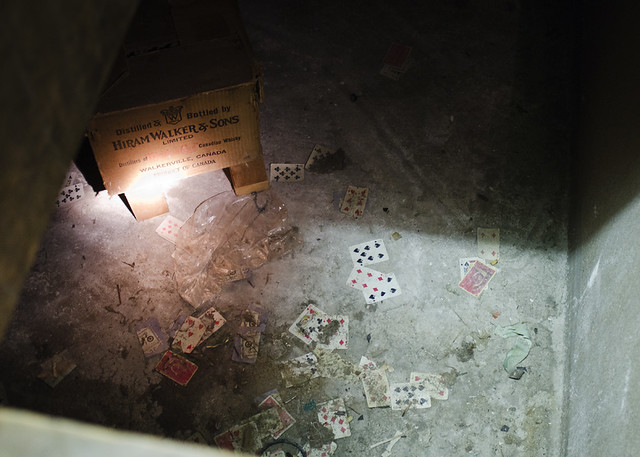
A bit further down from the Speakeasy room is the larger tunnel which originally was used by Hiram Walker to move between Walkerville and Detroit, where he resided. During Prohibition it was used to transport whisky across the border. It’s been blocked up since the time when the Detroit River began being dredged in the past few decades.
A Lesson In Prohibition
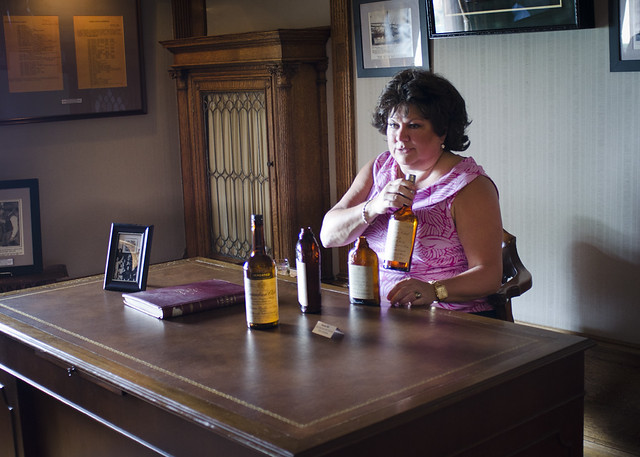
During Prohibition, Canadian Club had a big role to play in supplying the United States with whisky – smuggling product across the Detroit River was one of the ways, and under it too via Hiram Walker’s secret tunnel. Pretty soon into Prohibition, it became more difficult and with more daring smuggling attempts, the bottles used needed to be changed to ensure they didn’t break.
Tish explained how the term “bootlegger” came into being, and it was Canadian Club that started it all. The company changed the shape of the bottle to the smaller, curved bottle (seen in the photo in front of Tish), that could easily be slipped into a boot, curving around the leg. And so, the term “bootlegger” came into being.
Since smuggling required secrecy, encoded telegrams were used. Several of these decoded telegrams are on view to visitors.
Another interesting piece of history is the fact that you could legally get whisky if prescribed by a doctor. A few examples hang on the walls of the Canadian Club Brand Centre.
Art And Canadian Club Whisky
Art lovers will enjoy the gallery room, where a collection of paintings from the Group of Seven graces the walls. Several pieces are easily recognizable, having graced art books. The most valuable is a Tom Thomson piece – it’s small but easily recognizable as one of his paintings.
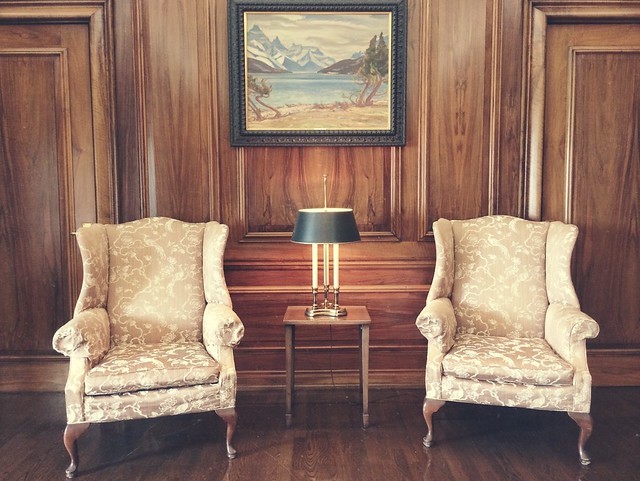
An 18th century French monastery wood table graces the center of the room, identifying Hiram Walker’s love of fine old things full of history. You can see marks in the wood at the bottom of the table where the feet of monks rested during meals.
A collection of Inuit soapstone art and a frosted glass depiction of the entryway draw the eye as well.
The Whisky And The Tasting
The tour also includes a CC tasting where you get to learn more about the liquid, how it’s produced and it’s fine qualities. Tish has perfected a way to pair Canadian Club whiskies with cheese and chocolate making the experience fuller – after all, in many cases, we enjoy a drink with food.

Canadian Club is a very smooth Canadian rye whisky – this is partly due to the process and the grain bill – a mix of rye, rye malt, barley malt and corn. This whisky is pre-barrel blended by the master blender and then aged in once-used white oak American bourbon barrels. Canadian Club Premium (1858) is blended according to the same recipe that was perfected by Hiram Walker so many years ago. All other CC brands have their own grain bill and recipe that make them unique.
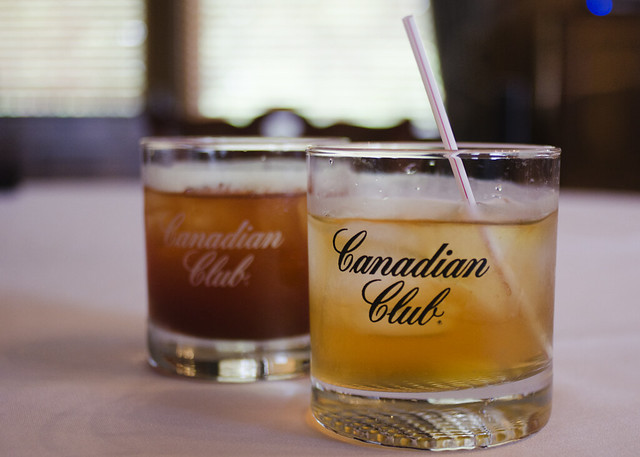
One of my personal favourites for sipping is Canadian Club Classic (Small-Batch, 12 year old). It’s smoothness and slight sweetness from the barley makes for a perfect Friday night drink neat or over rocks with a piece of chocolate. The new contender, just released in Canada in October 2014, is Canadian Club Chairman’s Select 100% Rye – it’s also delicious when sipped and makes one heck of a Manhattan.
However, Canadian Club makes for a perfect whisky for classic cocktails and easy drinks. Nothing beats a CC Premium and ginger ale on the rocks on a Monday night.
Visiting the Canadian Club Heritage Brand Centre
NOTE: As of March 31, 2017, the Canadian Club Brand Centre is closed to the public.
A few more photos from the Centre:
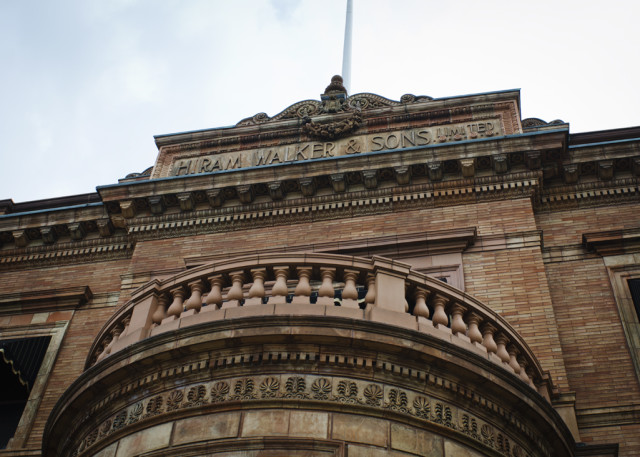
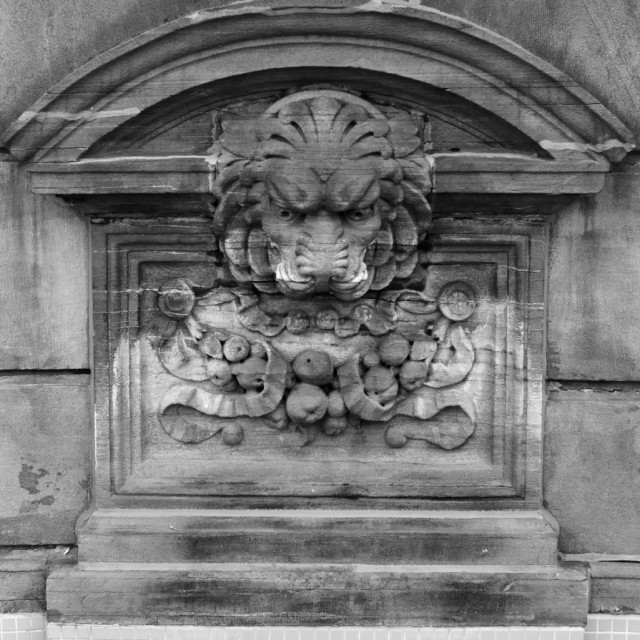
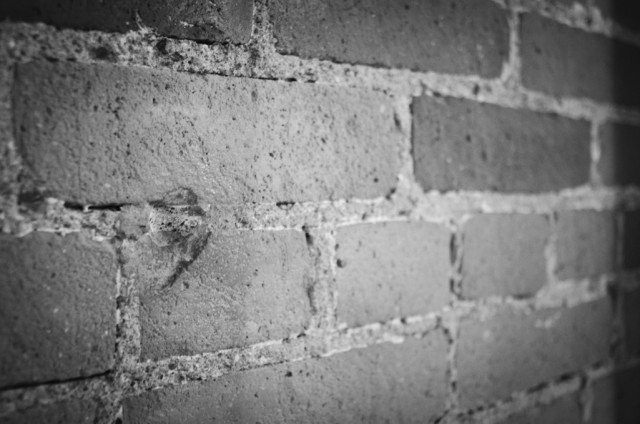
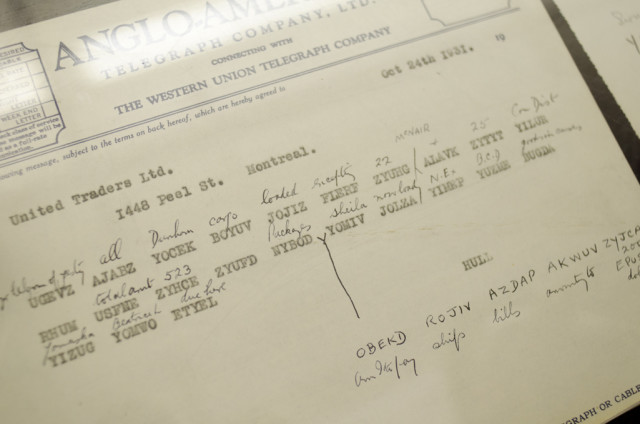
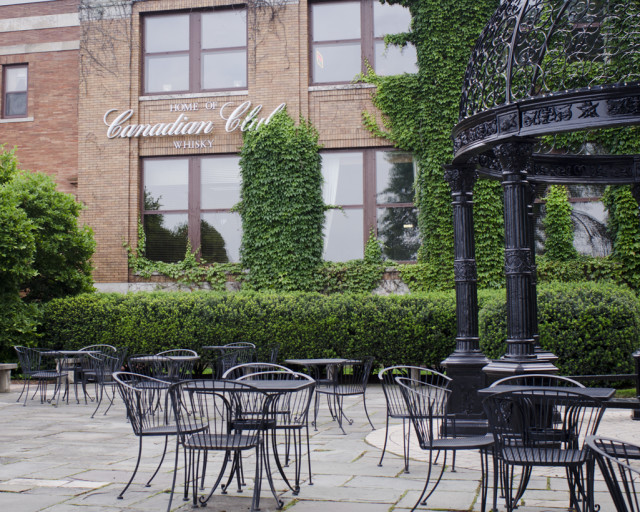

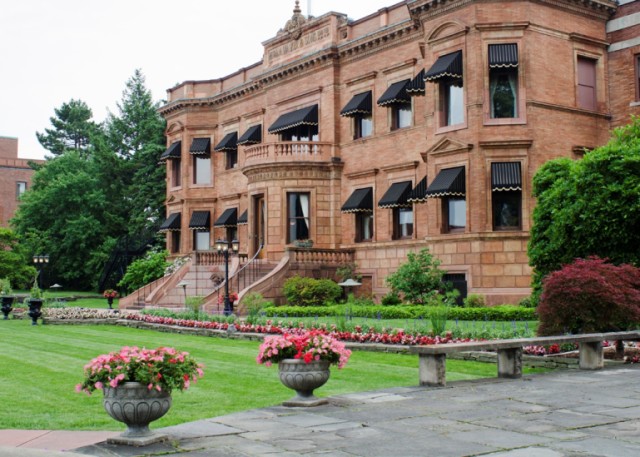
QUESTION: Are you a CC fan? What’s your favourite way to enjoy Canadian Club whisky?





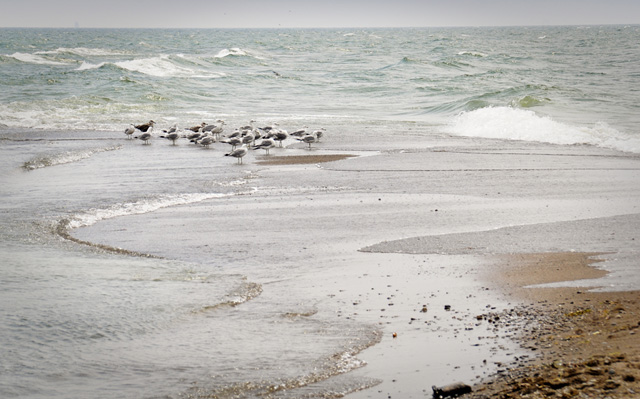
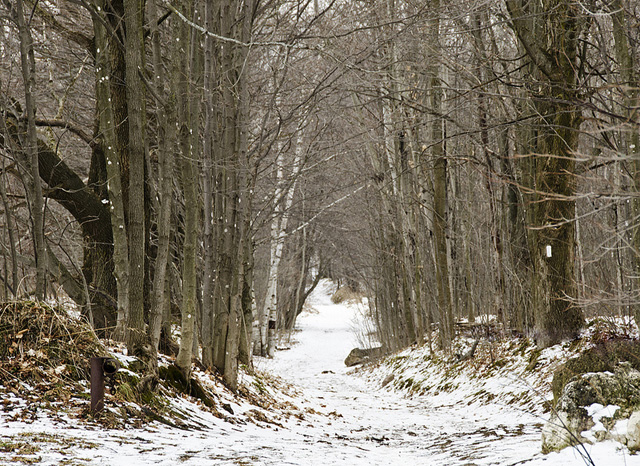
This is a great article, but there are a number of urban legends that your guide passed on that have no base in reality. As a former employee, and a student of local history, I can tell you with certainty that there were in fact no tunnels leading under the Detroit River from the Walker facility. The engineering for a secret tunnel would have been impossible, and the costs would have been incredibly prohibitive. Alcohol was moved by boat, which is both cheap and easy at that time given that the plant was located along the river. The history of Hiram Walker’s is incredible enough on its own without the brand ambassadors indulging in such silly stories and present them as fact.
Very interesting! So that one spot in the basement of the building that seemed to be pointing toward the river that’s been blocked off, and always seems to be a bit on the damp side with a puddle of water, is a nothing burger? I’d visited it several times over the years that I was working on promoting Canadian Club, and it always seemed to have a little damp spot.